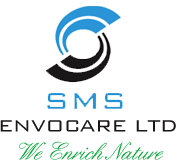Our Operations
At our facility Biomedical wastes are destructed by the combustion of organic substances contained in biomedical waste materials. Solid biomedical waste (category1) is treated by thermal treatment through incinerator. Incineration of waste converts the biomedical waste into ash, flue gas, and heat. The ash is mostly formed by the inorganic constituents of the waste and may take the form of solid lumps or particulates carried by the flue gas. The flue gases are cleaned, gaseous and particulate pollutants before they are dispersed into the atmosphere.
Facility has 20 TPD (Designed capacity) Incinerator with Primary and Secondary chambers. In primary chamber we are maintaining 850 degrees temperatures and in secondary chamber 1050 degrees temperature is maintained. Auxiliary burners are provided at primary and secondary chambers for complete destruction of hazardous waste.
Scrubbing mechanism is provided to achieve prescribed flue gas parameters as per Biomedical Waste Rules 2016. Residence time in secondary chamber for flue gases is 2 sec. We are monitoring Dioxin and Furan once in a year.
This facility has 8 TPD (Designed capacity) autoclave facility dedicated for the purposes of disinfecting and treating bio-medical waste. Each batch of autoclave is operated at Temperature 121°C, Pressure 15 PSI & Residence time is 45 Minutes. Following BMW categories treated by autoclaving White category
Red Category :
Recyclable Biomedical Wastes generated from disposable items such as tubing, bottles, intravenous tubes and sets, catheters, urine bags, syringes (without needles and fixed needle syringes) and vaccutainers with their needles cut and gloves are Autoclaved and disinfected.
White category :
Biomedical waste(Waste sharps including Metals) such as Needles, syringes with fixed needles, scalpels, needles from needle tip cutter or burner, blades or any other contaminated sharp object that may cause puncture and cuts this includes used, discarded and contaminated metal sharps are autoclaved and comes under White Category.
To validate the performance of autoclave we are doing validation test for autoclave in every quarter of year. We are also doing spore testing on weekly basis as per Biomedical Waste Rules 2016. This facility has 15 TPD (Designed capacity) chemical disinfection dedicated for the purposes of disinfecting and treating bio-medical wastes. Through this facility chemical and post disinfection wastes is sold to an authorized recycler.
Blue category biomedical wastes are treated such as Broken or discarded and contaminated glass including medicine vials and ampoules except those contaminated with cytotoxic wastes and Metallic Body Implants.
Chemical treatment using at least 10% of Sodium Hypochlorite having 30% of residual chlorine for 20 minutes or any other equivalent chemical reagent that should demonstrate Log104 reduction efficiency for micro-organisms as described in the newly updated guideline for CBMWTF.
This facility has 20 TPD (Designed capacity) shredding, post autoclaving plastic waste are shredded into small pieces so that it cannot be used and send to authorized plastic recycler for reprocessing. Shredded waste is stored in designated area. Data for shredded waste is maintained in the facility.
